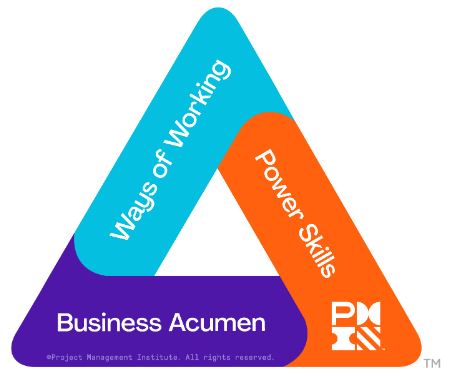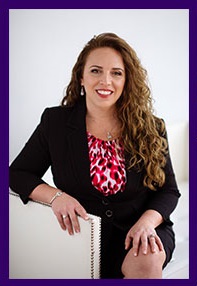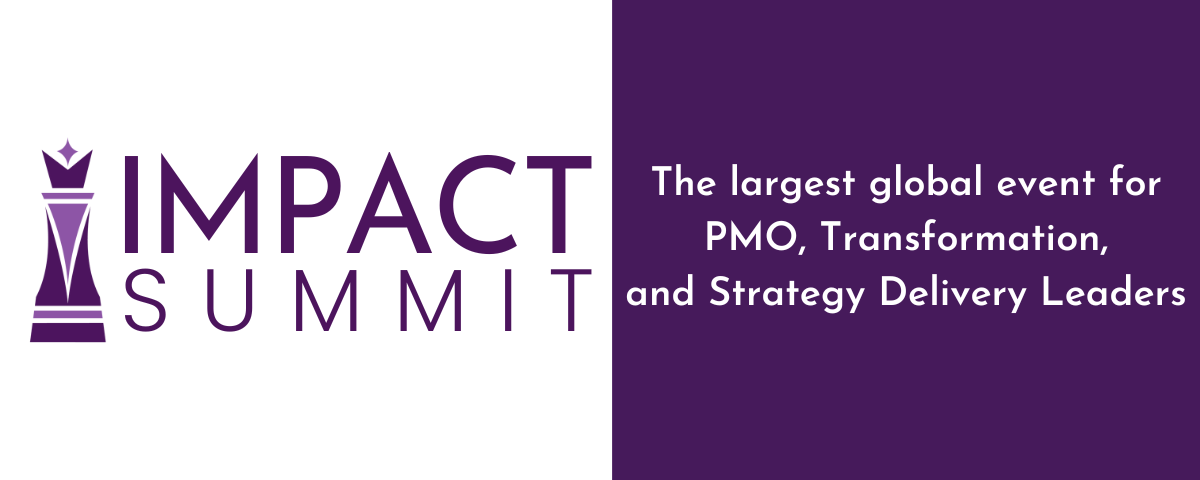
PMI Talent Triangle: Power Skills (Leadership)
Welcome to the PMO Strategies Podcast + Blog, where PMO leaders become IMPACT Drivers!
Today, we are talking with one of my dear friends and esteemed colleagues, Barbara Trautlein. We are going to talk about how to stop getting in the way and coach stakeholders to help, not hurt your projects. Before we dive in, let me tell you a little bit about Barbara. In addition to being my organizational change management superhero, she’s also a PhD and author of the bestselling book Change Intelligence: Use the Power of CQ to Lead Change That Sticks. She’s also the principal founder of Change Catalysts and originator of the CQ System for developing change intelligent leaders and organizations. For over 30 years, Barbara has coached executives, trained leaders at all levels, certified change agents, and facilitated mission-critical change management initiatives, achieving bottom line business and powerful leadership results for clients, and this is so super cool to me and not a surprise at all. In 2015, she had the honor of being awarded Change Management Consultant of the Year by the Association of Change Management Professionals Midwest Chapter. She is truly gifted at sharing strategies and tactics that are accessible, actionable, and immediately applicable, and that is why I had to share Barbara with you all here, all of my impact drivers, because I know like me, you want to have the practical takeaways and the list of things that we can go do right away to affect the changes that we’re trying to create, and it’s not just about the theory, and it’s not just about the stories. Those certainly help give us the context of what we’re trying to do, but we also just want to know how do I put this in practice right away. Barbara is the person to talk to when it comes to change intelligence and bringing people with you through the change process.
Laura Barnard: Today, we are going to talk about an incredibly important topic to everyone listening today. Whether it’s sponsors blessing and advocating, or end-users resisting, or project team members not following through with their accountabilities, that never happens, right? As a PMO leader, you grapple with challenging stakeholder behaviors every single day, so in this session, we are going to talk about highly interactive learning experience and how you can learn about potential root causes of the seemingly difficult behaviors that we deal with sometimes in the workplace and what you as a PMO leader can do to coach others to become collaborative contributors, to have a positive impact, build relationships, and get results for your projects. Barbara, you’ve created this really cool concept called Change Intelligence or CQ, which is your foundational approach. I’ve heard you describe it as vital competency for any PMO leader right up there with EQ or emotional intelligence. Can you talk about this CQ concept and what it means?
Barbara Trautlein: Sure, absolutely. How I define CQ or change intelligence is that change intelligence is the awareness of our style of leading change, and every project is a change, so every PMO leader is a change leader. That’s my terminology. It’s our awareness of our style of leading change and our ability to adapt our style to be optimally effective across people in situations.
First of all, the awareness of our style, and then the ability to adapt our style. To get the most out of our brief podcast today, just let me explain what those styles of leading change are so the listeners can self-diagnose because it’s a simple, but powerful model. What I say is that people lead change, lead projects, lead PMOs from one of three ways, that some people lead from the heart that’s focusing on the people. They’re very engaging, and collaborative, and communicative. Some people lead more focusing on the head. That’s the vision, the strategy, the purpose, the goal of the change of the project, and some people lead primarily from the hands. That’s the process. That’s the tactics. That’s the organization. That’s the details that’s moving from here to there. Just like we each have a head, a heart, and most of us have two hands, each of us do lead from those three styles. However, we tend to have a preference.
We tend to have a preference that energizes us that when we’re at our best, that’s really what distinguishes us and that we bring to the table. I have an assessment by the way that people can take to see what’s my combination, what’s my preference for leading from the heart, the head, the hands. There’s actually seven styles of leading change when you put that all together. That’s kind of beyond the scope of this podcast. We’re just going to talk about leading from head, heart, hands right now, but if people do want to take the assessment, I share it for free with the first 50 people who reach out to me, or I can just share more information about how they can take it, but it’s a very intuitive model, right? What you think your primary style is because that’s going to have implications for how you engage for change with people of other styles and how you’re able to kind of deal with and “overcome” difficult stakeholders behaviors by adapting your style. That’s basically CQ, being aware of your own style. Whether you lead primarily from the heart, engaging the people, the head, the purpose so the hands, the process, and then being able to adapt, bringing other styles, other behaviors because the only thing you can control is yourself anyway. Your mindset and your behavior, so you can engage across a broader variety of stakeholders at different critical phases in the project.
Laura: Absolutely, and I have to tell you, I learned some good things about myself, both my strengths and my blind spots, from the session you did as a part of the PMO IMPACT Summit recently, and when I was watching, and I had read your book before, and I’ve done your assessment, and I just… I have to tell all of you listening today. Definitely go check it out. It is so valuable to you to help you understand and improve your change intelligence. I happen to know my styles. I tend to be in that I’d say high head, high hands kind of driver mode, dead in the middle of that high hands area. I am the get-it-done girl, and so many people say to me they have no idea how I get so many things done in a day, and quite frankly. I don’t know either some days, it’s because that’s how I’m driven, and motivated, and focused.
I learned from you that because of that, there can be some blind spots that I might have that will prevent me from being as effective from driving as fast as I want to, and I learned a lot from you about bringing people with me through the change process, and taking care of the people through the change process, and helping them see the vision and the ideas that I have, not just saying, “Well, don’t you see it? Don’t you get it? Don’t you understand?” as well as understanding that not everybody can move at the pace that I can move and I need to be thoughtful of that. You’ve taught me so much through all of this, I’m glad that we’re getting to talk about it a little bit today, and every one of you listening, definitely go check the show notes. Definitely go look up Barbara. Grab that book. Take her up on this opportunity to take the assessment because it is incredibly eye-opening and will change the way you manage your people and lead the organization going forward. I 100% guarantee it.
Barbara: Thank you so much. To build on a couple of things you said, Laura is that that is a very common progression that I see in the project management world that a lot of folks start off pretty high hands as I say. Really, because again, that’s… What’s the project management world bring to the table, what’s the goal that you give the world is all those processes, right? The processes, and methods, and methodologies, the tools for managing projects, right, and programs, and portfolios. That’s the gift, very focused on the hands. However, a lot of project management professionals as they progress in their career recognize that that significant strength can be an overdone strength, right, focusing so much on the details in the process, right? That could frustrate others who want to either…
Again, who had different things on their radar screen, right, and also, because we’re so focused on the process, and the tools, and the details, can neglect or be blind to other critical aspects of the change that are very important to others. For example, the head. So often, there’s frustrations attempting to engage business leaders and change in sponsors because what’s on their radar screen is the head, is the vision, is the strategy. “How is this project going to further my business?” Right?
“What are the risks in this approach that might get in the way of my business?” If we don’t speak the business language, right, if we don’t enlighten the head, right, and connect on that level, then resistance will result. Similarly, so many times, we have issues on our projects because either we are struggling to engage our project team members, right, who might only report to us on a part-time basis, and we might also struggle with engaging end-users, right? The people that are impacted by the change because what’s on their radar screen is, again, perhaps more heart-oriented considerations. “Do I know you? Do we have a relationship?” There’s some emotional resistance here. There’s some fear. There’s some resentment. Whatever it is, and so if we don’t also connect on that heart level, right, try to engage the heart. Sometimes that means going slower, slowing our pace than we want to. Sometimes it means altering our plans to incorporate the input of others. Right? That can be frustrating, and that could unintentionally cause resistance in the people that we’re trying to engage for change
Laura: Yeah, and that’s a great lead into the next thing I want to talk about a little bit because anytime I am talking about change management or bringing people through change, which is basically every time I’m talking about PMOs or project management because to me, it is the core foundation, and anything that I talk about on stages, anything I talk about in my training programs, it all has this underlying firm foundation around organizational change management.
One thing I hear a lot though when I ask people, let’s say I’m doing one of my keynotes, and I’m on stage, and I say, “Okay. How many of you feel that people are resistant to change?” Almost every hand goes up, and I don’t believe that. I personally believe that people are not resistant to change. They are resistant to having change done to them, and so I’m always trying to help people understand it’s the way we’re going about it and control what we can, right? It’s the way we’re going about bringing people through change that causes the challenges, so I believe every PMO leader needs to have a strong CQ in order to be effective in their roles. How does building our CQ helps us deal with resistance to change when we see it and coaching our stakeholders to be effective contributors to our projects and PMO?
Barbara: Yeah, absolutely, so I totally agree with you. One expression I love is by Rosabeth Moss Kanter. She wrote Change Masters back in the day. She’s a Harvard girl, and she says that change is threatening when done to us, exhilarating when done by us. One maxim we know from the change management world is that participation leads to ownership, participation leads to higher quality decisions, and it leads to ownership, and so how to change it… how does building our CQ help us overcome what looks like resistance in others?
Well, I think that if you think about and our listeners think about how resistance is manifesting on our projects right now and in our PMOs, in my experience, a lot of resistance boils down to three different categories. People don’t get it, first of all. They don’t get the what and the why of the project. I think that’s kind of cognitive, intellectual resistance, or people can’t do it. Right? They might get it, but they just don’t know how to behave consistently with the change or the new expectations, or there are barriers standing in the way of good people adopting the change. Communication barriers, reward system barriers, operational barriers, whatever, or the third is that they don’t like it or they don’t like you, that there’s some kind of emotional resistance, right, that’s standing in the way. Fear, threat, loss, whatever it is, every change is an emotional journey, right, and we need to… One thing that I frequently coach PMO leaders, project managers at all levels about is to use your own and others’ emotions as data. Use your own and others’ emotions as data. So often, the best-laid plans, the most logical, efficient project that we’re rolling out, why do they sub-optimize and derail? It’s not the logic. It’s not the plan. It’s the emotions behind it and people’s emotional sources of resistance, and if we don’t look at those emotions as data, incorporate them into our plans, sometimes even go slower than we want to, right, to have more of those input opportunities, we’re going to fail.
Laura: Exactly, so let’s make this really practical for people. Can you talk about an example of these different scenarios of kind of… One thing that frustrates me, and I remember I used to say all the time was, “People just don’t get it. They don’t understand what I’m trying to do,” and that I guess was when I was in more of my head mode, I guess.
Barbara: Yeah, absolutely. So that’s very frequent when we’re dealing with business leaders, right? It can be very frequent that we’re very frustrated with our business leaders, our sponsors who are not engaged optimally in sponsoring our project, and in sponsoring the change to their peers and their organizations, and so I always say that the most important competency for leading change isn’t head, heart, hands. It’s courage. It’s the opportunity to facilitate those courageous conversations because what you see depends on where you sit. I see time and time again how it’s so easy to vilify business leaders, but what you see depends on where you sit. So often, the higher up you go in an organization, the difficult, the more difficult it is to get any feedback at all, let alone real-time and actionable feedback, so we can get into the should mode, right? “Sponsors should know what to do. They should have the information. They should get it. They should see it.” But that’s just “shoulding” on ourselves and others, right?
What I see so often, again, getting back to the… vilifying them, so often, again, I’ve coached these executives behind closed doors as have many of your listeners, and I’ve heard so many times the fear that’s there. We think about fear on the front lines. There’s fear at every level, and so, so often, there’s the imposter syndrome that comes up. Executives have gotten to the level in their career, and sometimes they sit back, and they question whether they can meet this new daunting change challenge. Can they really get in front of this project, this huge initiative, and can they really effectively champion it? Right? What’s the impact of potential failure? I see that imposter syndrome so much. It’s often an opportunity.
Again, we think they should know what the impact is. They should know what they can do in their role and the sponsor, but so often, we don’t really train and educate people about what a sponsor means and what specifically a business leader needs to do to champion a change or to partner with us effectively, so I often say we had to take the opportunity to sit back and often educate our sponsors because really… and build that relationship. Relationships get results. Remember that every influence attempt is both an opportunity to further our project goals as well as to build relationships with our key stakeholders.
Laura: Yes, I remember one of my favorite CEO clients said to me once that before he knew what it took to be a sponsor, he was a terrible sponsor, and now he knows so much more about what is expected in that role, but he didn’t right away, and so I actually created a little mini-program called How to Train Your Sponsor. I think there’s actually probably a blog post out there. Maybe I’ll do a podcast episode about that as well, but in our membership program, I specifically have a course called How to Train Your Sponsor because people make assumptions that they should just know what to do it, and they don’t necessarily. If they’ve never sponsored a project or PMO before, how are they supposed to know what to do? So it’s incumbent upon us to build that relationship and kind of get that agreement of, “Here’s how you need to support me for this to be effective. Here’s what I’m going to do for you,” and all that. Now, this is the one that’s personally the one I just can’t stand, the can’t like, “I can’t do it,” or, “We can’t do it,” or that kind of negative thinking. In our household, we have a rule that the word “can’t” is not allowed in our vocabulary because that limiting belief will keep us from achieving our goals and being in our brilliance, so what do you do in that scenario?
Barbara: Yeah, I love that. So I’m an organizational psychologist by training, so I’m going to take a step back and talk about what we call in psychology the fundamental attribution bias, fundamental attribution bias, and basically, that means that when we look at other people, what do we see? We see their behaviors, right? We see their behaviors. Can we see their intent? No, we cannot see their intent. When we look at ourselves, what do we know? We know the positive intent behind our behaviors. Right? What’s the implication of that? Well, so often, we look at what other people do and don’t do, or say or don’t say, and it can be very easy when they’re… what they’re saying is not aligned with our goals that we can again vilify them, that we can assume it’s a will, not a skill issue, and we make up stories about our stakeholders, and in our stories, we’re the victim and they’re the villain, right? They’re intentionally not complying. They’re intentionally not… saying they can’t do it, but we really believe they can. I always say that start with looking at questioning that assumption that you’re making and asking, “Is it really a will issue? Is it a motivation issue?” Right? “Or is it a skill issue?” Again, is it something that… Again, it helps us be more empathetic with others, first of all, and more generous with others because oftentimes, what looks like resistance… People might have had a one-off training class, but they need the coaching. Right? People might have had some coaching, but there might be barriers in the system that are preventing good people from complying with our projects. Some studies show that 86% or more of what looks like an individual performance issue was actually a systemic issue, that if you put people… you put a person against a bad system, a good person against the bad system, the system is going to win every time, and so yeah, we stop. We stop short of really looking at all the tentacles of what’s impacted by our processes and all the other, right, challenges, and priorities, and systems, and organizational constraints that people are dealing with. So even if they have the skill as an individual, sometimes they don’t have the skill to navigate a complex system, and that could be an actual procedural system or just the political system, the organizational constraint to get from here to there.
Laura: Wow. Okay, so that really flips that whole concept on its head. It may not be a resistance from them. It may actually be the system they’re working in that’s creating an environment where they can’t be at their best and helping to contribute the way you’d like, so that’s great. Oh my god. Exactly, so just like with our sponsors and senior leaders, what you see depends on where you sit. Right?
Barbara: They don’t get it and they don’t get their role unless we help… and the impact of what they’re doing and not doing unless we help them see that. The same thing with dealing with our peers or the end-users of our change, right? What you see depends on where you sit, so we as PMO leaders and project managers, we need to be relentless in soliciting that upward feedback about what people are seeing and what is standing in their way instead of vilifying people, throwing them under the bus, right, getting frustrated. Get at their level. See what they’re seeing because, again, I think that if we all have access to similar information, right, that we might really see things very similarly and be able to partner together for a go-forward solution.
Laura: See, you’ve just given me a completely different way to look at it as well. That’s great, so now, here’s the tough one. What about that third type of resistance, “I don’t like it, and I don’t like you,” the emotional effective type of resistance? What ideas can you share on that front?
Barbara: I think one of my favorite expressions is, “Relationships get results,” and that as much as we can to build relationships beforehand with people, put that deposit in our emotional bank account because during times of change, we’re going to need to make a withdrawal. So again, even though it takes more time, it’s not a one-and-done, and this is where I say that use your own and others’ emotions as data. Use your own and others’ emotions as data, changes in emotional journey, and how can we again see from the perspective of the people that are being impacted by the change, what their fears and losses because one thing that we know is that us in the PMO world, on our project teams, we’ve been thinking about the changes that we’re introducing to people for a lot longer than they have, and so what’s on our radar screen tends to be the positive possibility or at least the need, the business need for the change. When people are first introduced to a change, what they often do, and to your point about people hate change, right, what are they thinking of? They’re thinking about what’s not going to work. They’re thinking about what they’re going to lose. They’re thinking about the impact on the people. They’re thinking about the impact on the process. Right? They might not think about it consciously, but they’re thinking, “I haven’t had my say in this.” Right? “This isn’t how I would do. Who are they to do this?” Right? All these emotional kinds of things, so sometimes what looks like resistance is people just haven’t had the time. Right? Sometimes we just, again, need to give people time to wrap their heads around the change to really process it, right? Ideally, again, since ownership participation leads to ownership, even if it’s a small way that we can collect opinions, right? Solicit input, allow people some control, some agency over some part of the change that we’re rolling out. That will go so far to reduce resistance to the project that we’re proposing as well as build that sense of relationship and trust with us as the leaders.
Laura: Wow, that’s great. That’s great. Okay, so you’ve just blown my mind completely, and I already had read the book, and I’ve already been applying a lot of things, and quite frankly, I teach a lot of this stuff, but you have a way of putting it together that’s just giving me so many new ideas and ways I can address resistance and help my students that are in my IMPACT Engine PMO Coaching Program, help them understand how they can contribute and move things forward more effectively. So with all of that said, what are some of your top tips for dealing with each of these types of resistance and kind of some takeaways for the audience as we wrap up today?
Barbara: Well, as we wrap up, I would just say that there’s an opportunity for us to reframe what looks like resistance from our enemy to our ally. Reframe resistance from enemy to ally that really, resistance isn’t futile. It’s fertile. It’s a powerful source of information that we as PMO leaders can use to change. The only thing we can, which is you already noted, is ourselves. When we’re looking at, yeah, our key stakeholders that we’re attempting to lead through change, if it seems like the resistance is that they don’t get it, that they’re confused, they don’t understand why the change is needed, the business case, the metrics, ask yourself, “Have I created and communicated a compelling vision and case for change? Have I painted the picture so others can dream the dream?” If you’re observing your people and what you see as a source of resistance is that frustrating, “I can’t do it,” they’re not behaving consistently with the change, maybe they need a dose of the how, the hands. Ask yourself, “Have I made the parts that I’m asking them to play, and the expectations and the deliverables crystal clear? Have I provided training and developmental experience for people to build new competencies and coach them to feel confident and empowered, and have I provided the resources and remove barriers to make them successful?” Finally, if what you’re really seeing is that emotional resistance, “I don’t like it, and I don’t like you,” then… or a passionless compliance or demotivated resignation, then ask yourself, “Have I engaged people in the change beyond just the intellectual level? Have I made it personal, the emotional appeal?” Right? “Am I, as a leader in general, again, looking forward, building those relationships ahead of time, continuously listening, giving and receiving honest feedback, keeping a pulse on the… keeping a finger on the human pulse of the transition? Really, am I kind of emerging as a leader who’s leading the PMO?” Remembering that… What is a PMO? What is an organization? It’s comprised of people, and people make or break, as we know, any kind of change. So again, remember that behind every complaint is a request. See if we can move from judgment to curiosity, right, from vilifying and shooting ourselves and others to really wanting to, wanting to understand, partner with people, and integrate all our needs and concerns to the extent that we can obviously into the resolution strategy.
Laura: Oh my gosh, that’s fantastic. That’s fantastic. Well, Barbara, thank you so much for being here, and as people are kind of going back and thinking about this, and putting all of this into practice, what do you want to make sure that they remember? I know you’ve talked before about the platinum rule. What is that, and how do we carry that with us when we go forward?
Barbara: Yes. Well, I didn’t make this up. I wish I had, but basically we all know the golden rule, “Do unto others as we want to be done unto.” When we talk about leading change, follow the platinum rule, “Do unto others as they want to be done unto.” So that’s change intelligence, in a nutshell, is be aware of our style and be able to adapt our styles, so we as leaders can give people what they need to get it, to want it, and to be able to do it. That’s basically CQ in action.
Laura: I love it. Wow, Barbara. Thank you so much for sharing all of this with our impact drivers today, and can you remind everyone how they can find you online and through your programs and your book?
Barbara: Sure, absolutely. Well, the best option is just to go on my website, which is changecatalysts.com, and on that website, they can download two free chapters of my book. Again, there’s video. There’s audio. Go to the Resource page. You can download research papers on the 10,000 plus CQ assessment database resources to help you adapt as a change leader and build skill in that way, and then for information about my workshops, webinars, and also, my certification program in change intelligence, which is approved for credit by the PMI and several other organizations as well.
T hanks for taking the time to check out the podcast!
hanks for taking the time to check out the podcast!
I welcome your feedback and insights!
I’d love to know what you think and if you love it, please leave a rating and review in your favorite podcast player. Please leave a comment below to share your thoughts. See you online!
Warmly,
Laura Barnard








